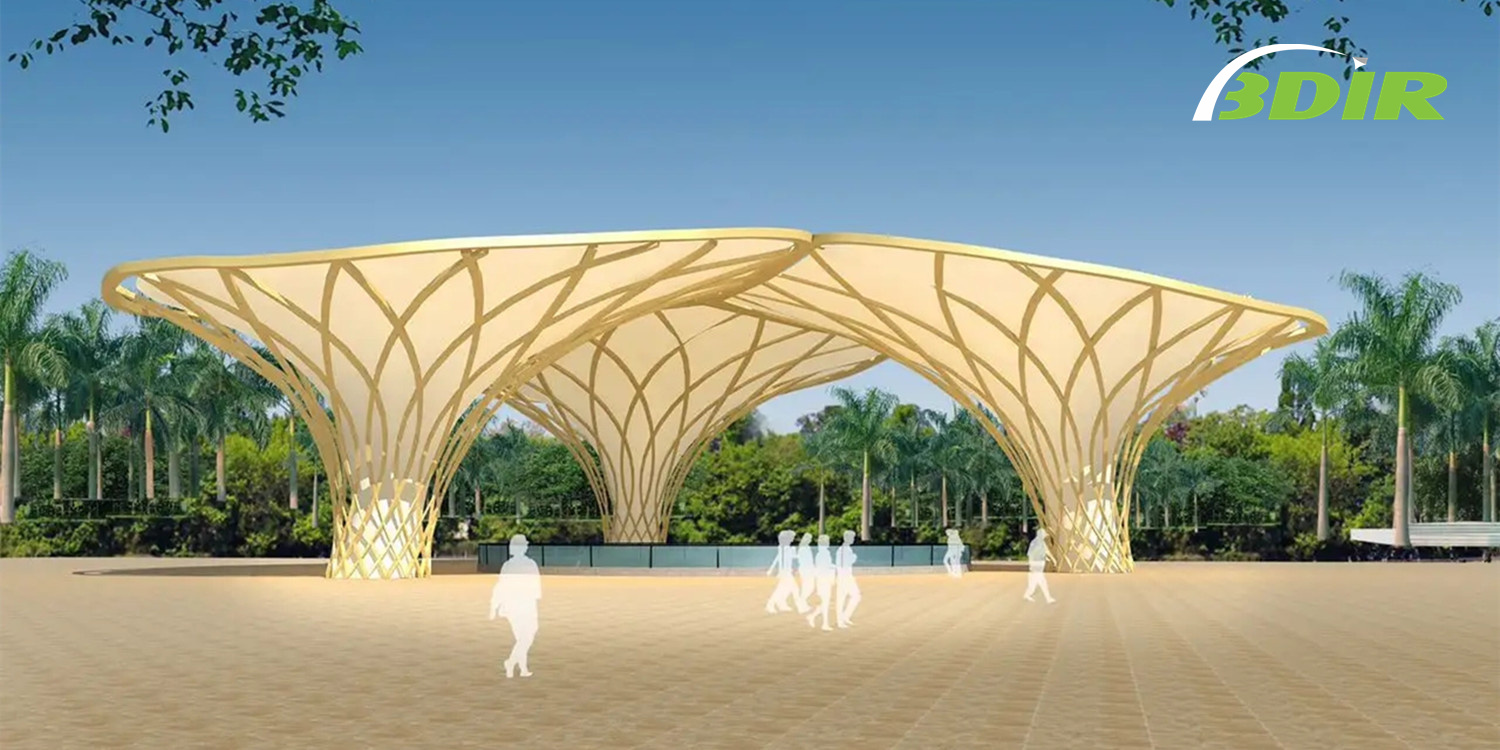Tensile structure is a type of architecture where roofs construction uses membranes held by steel cables. The structures are easy to use due to their nature of being easy to change shape, cover large areas, and are stretchable. It uses materials accompanied by thin steel so that when it comes into contact with steel cables, it creates surfaces that can overcome different forces.
There are different types of tensile structures. These are:
- The membrane structures-their main support is the cables, which makes the tensile stress distribution easier. During its use, they transmit more light than the traditional methods. Most of them are waterproof and have sleek designs making them be used mostly for roofing purposes. Examples include the building of beams, compression rings, e.t.c.It can last up to 20 years and works well with enclosed areas like bars, restaurants, hotels e.t.c
- Mesh structures-It uses intrinsic forces that get transmitted through different materials like wood, glasses e.t.c
- Pneumatic structures-it uses air pressure. The structures get support from internal air pressure. An example is a group of cables that get stiff when air pressure increases and the compressor maintains it.
What are the tensile structures used for?
There are several uses of tensile structures. Examples these structures can build include:
- Stadiums and arenas
- Drapes and straight tension cables
- Suspension and stressed ribbon bridges
- Cable trusses
- Bicycle wheels
- Gridshells
What are the advantages of tensile structures?
There are several benefits of using tensile structures:
- It's easy and quick to install. When contractors understand the technology behind tensile structures, it's easier for them to embrace these structures and set up the project faster with fewer costs.
- They are very light. It uses less steel when building the structures, making them have less weight. The lightness makes it cover a large area when building.
- Tensile structures are durable. Most of the material used to make the structures can survive harsh weather conditions like high temperatures giving it a lifespan of up to over 15 years.
- It uses fewer costs. When comparing the normal building structures to tensile structures, tensile is better. The materials cover a large space with less steel making it a cheaper alternative.
- It takes less time. When you use qualified professionals, it takes a short time to complete the whole project due to the easy installation.
- It needs little maintenance. The materials come coated with PTFE and fiberglass, making them more protective from environmental issues like rust. Therefore, they are easier to maintain.
- It offers different types of designs. Tensile structures give users a lot of designs to choose from. The versatility gives the professionals involved, like engineers, and designers, the chance to customize any structure according to their needs. It makes sure the projects delivered are eye-catching and unique from the rest.
Are you building any projects?
Do you have a project coming up and you are stuck on which structures to choose? The project can range from engineering, manufacturing, government properties, and other design projects. Talk to your contractors and let them use tensile structures, and you will be happy with the output.


